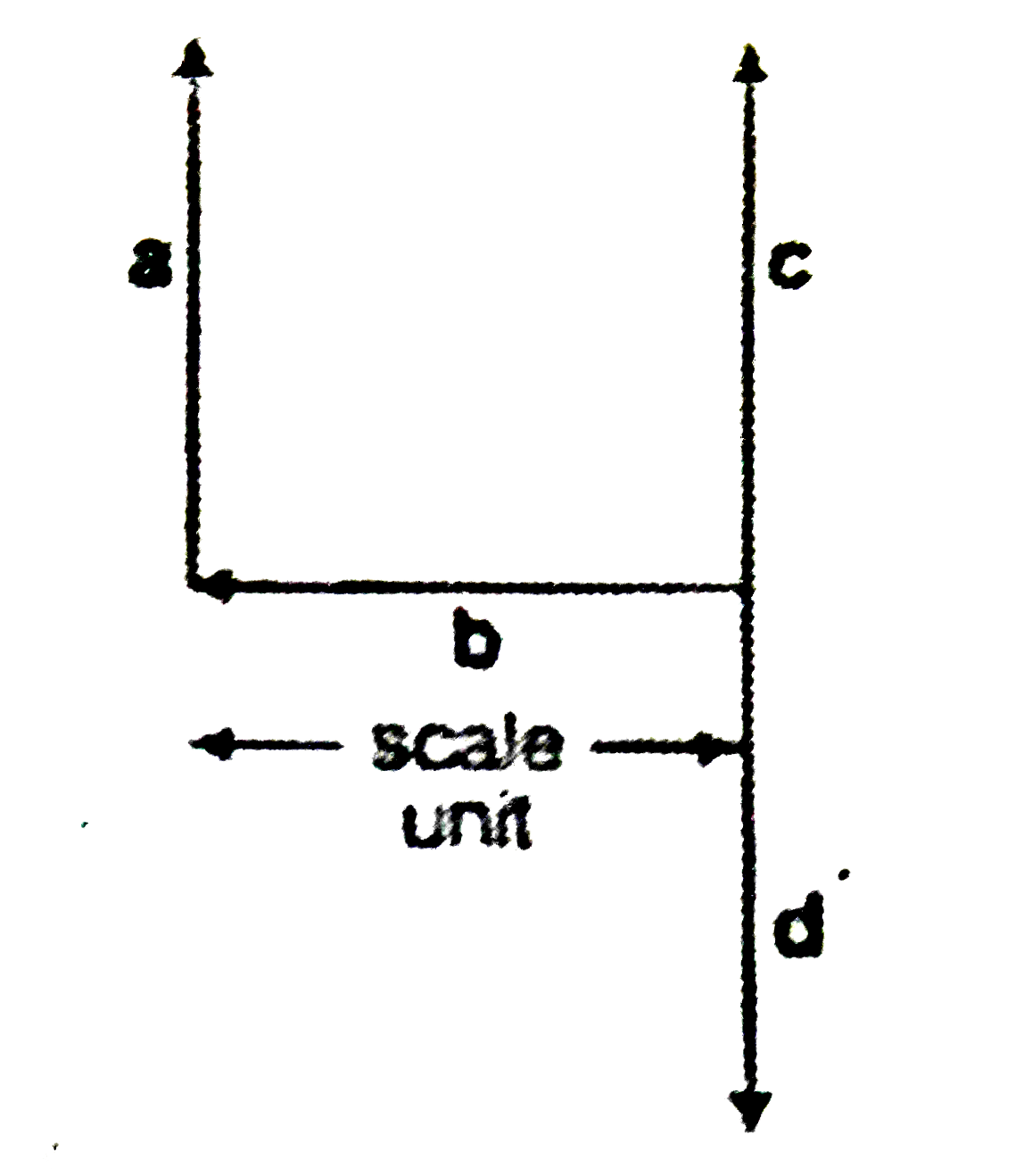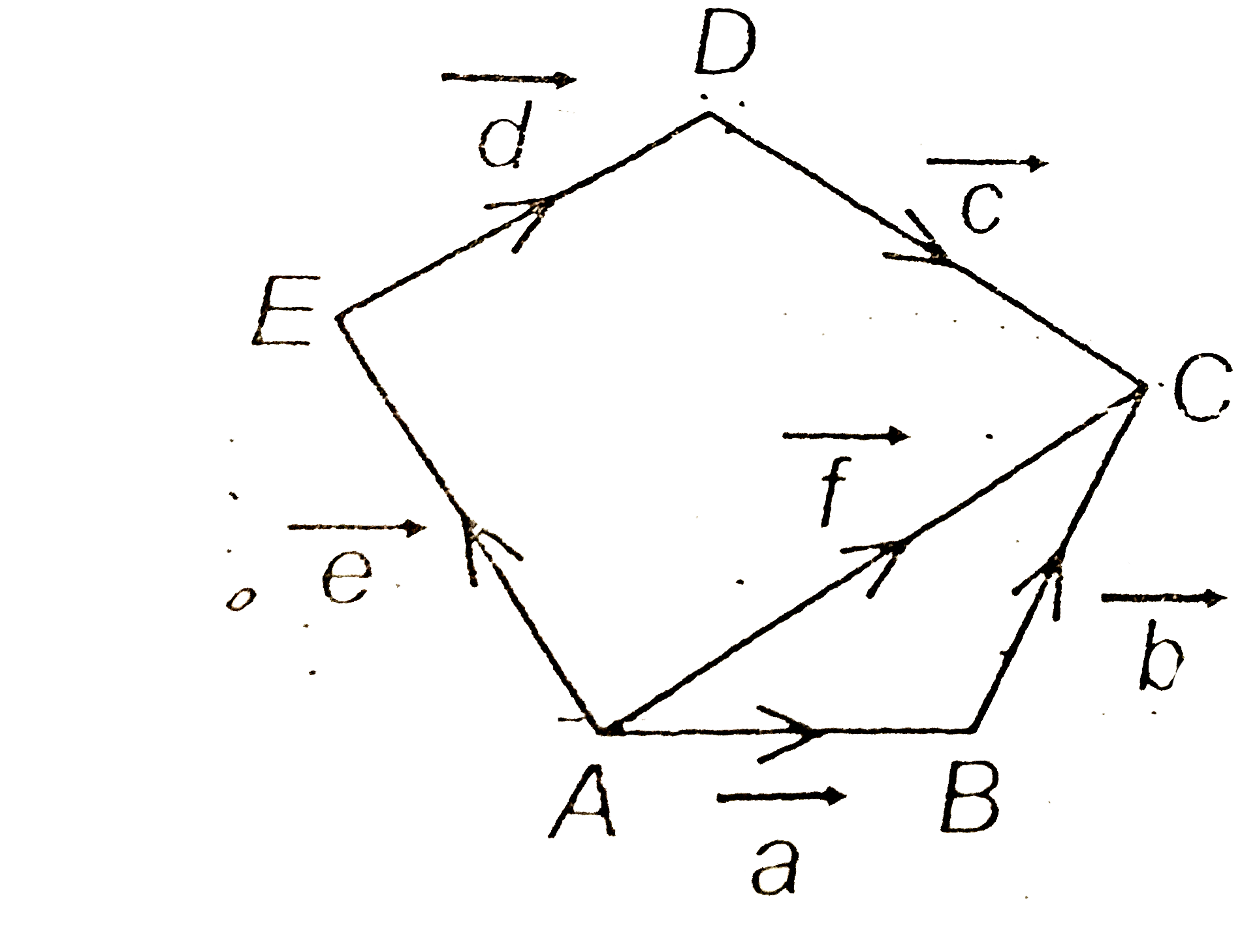In fig 23.3, which of the vectors are: i.Collinear ii. Equal iii. Co-initial
To solve the question regarding the vectors in figure 23.3, we will analyze the vectors based on the definitions of collinear, equal, and co-initial vectors.
1. Identifying Collinear Vectors:
- Definition: Collinear vectors are vectors that lie along the same line or are parallel to each other.
- Analysis: From the figure, we can observe that vectors A, C, and D can be placed along a single line. Vectors A and C point in the same direction (upward), while vector D points downward. Thus, we can conclude:
- Collinear Vectors: A, C, D
2. Identifying Equal Vectors:
- Definition: Equal vectors have the same magnitude and direction.
- Analysis: In the figure, we see that vector A has a magnitude of 2 units (as indicated), and vector C also has a magnitude of 2 units (1 unit + 1 unit). Both vectors A and C point in the same direction. Therefore, we conclude:
- Equal Vectors: A, C
3. Identifying Co-initial Vectors:
- Definition: Co-initial vectors are vectors that start from the same point.
- Analysis: In the figure, we can see that vectors B, C, and D all originate from the same starting point. Therefore, we conclude:
- Co-initial Vectors: B, C, D
Final Answers:
- Collinear Vectors: A, C, D
- Equal Vectors: A, C
- Co-initial Vectors: B, C, D
- Definition: Collinear vectors are vectors that lie along the same line or are parallel to each other.
- Analysis: From the figure, we can observe that vectors A, C, and D can be placed along a single line. Vectors A and C point in the same direction (upward), while vector D points downward. Thus, we can conclude:
- Collinear Vectors: A, C, D
- Definition: Equal vectors have the same magnitude and direction.
- Analysis: In the figure, we see that vector A has a magnitude of 2 units (as indicated), and vector C also has a magnitude of 2 units (1 unit + 1 unit). Both vectors A and C point in the same direction. Therefore, we conclude:
- Equal Vectors: A, C
- Definition: Co-initial vectors are vectors that start from the same point.
- Analysis: In the figure, we can see that vectors B, C, and D all originate from the same starting point. Therefore, we conclude:
- Co-initial Vectors: B, C, D
- Collinear Vectors: A, C, D
- Equal Vectors: A, C
- Co-initial Vectors: B, C, D
Topper's Solved these Questions
Similar Questions
In the following figure, which of the vectors are:
(i) Collinear
(ii) Equal
(iii) Co-initial
(iv) collinear but not equal .

View SolutionIn the adjoining figure which of the vector are: collinear

View SolutionIn the given figure, which of the vectors are :
(a) Collinear
(b) Equal
(C ) Colinitial
View SolutionIn Fig. ABCD is a regular hexagon, which vectors are: (i) Collinear (ii) Equal (iii) Coinitial (iv) Collinear but not equal
View SolutionIn the given figure, ABCDEF is a regular hexagon, which vectors are:

(i) Collinear
(ii) Equal
(iii) Coinitial
(iv) Collinear but not equal.
View SolutionIn a fig 23.4 (a square), identify the following vectors: i.Coinitial ii.Equal iii.Collinear but not equal
View SolutionIn the given figure, which of the following vector are
(a) collinear and equal (if ABCD are regular pentagon)
(b) coinitial vectors.

View SolutionIn the given figure, vectors which are
Collinear
Equal
Collinear but not equal.

View SolutionIn the adjoining figure ABCD is a rectangle . Examine which of the vector are: collinear but not equal
View SolutionIn the given figure identify the following vectors: collinear but not equal
View Solution
